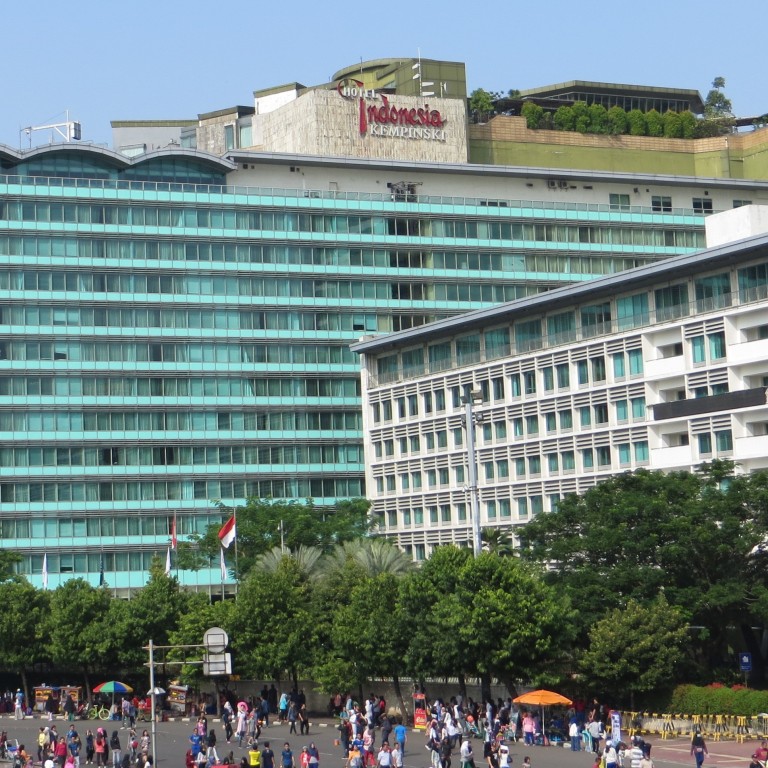
Inside Indonesia’s first five-star hotel, in Jakarta, and its part in building a nation
- Opened in 1962, Hotel Indonesia was a major part of President Sukarno’s vision to build the confidence of the country’s people
- A huge revamp kept its facade but transformed the interior, making it ‘basically a brand new hotel’
Visiting Jakarta, known for some of Asia’s worst traffic jams, should become slightly more bearable this year with the opening in March of the first 16 kilometres of the North-South Mass Rapid Transit Jakarta rail system – the Indonesian capital’s first.
Work on the project started in 2003, and was subject to numerous delays, but the MRT line – comprising both subways and overhead rail – will be capable of carrying up to 200,000 passengers a day in air-conditioned comfort. It will run from the Hotel Indonesia Roundabout – with the famous Welcome Monument and its two giant waving figures at its centre – to the southern area of Lebak Bulus, passing under Sudirman Road – the central business district – along the way.
Construction of a second MRT line, running from the roundabout to Kota Tua (Old Town), should start early this year.
The first MRT line will cement the status of the Hotel Indonesia Roundabout as the heart of Jakarta’s transport system. Arguably, the neighbourhood is already at the core of the city’s modern history as envisioned by Indonesia’s first post-independence president, Sukarno.
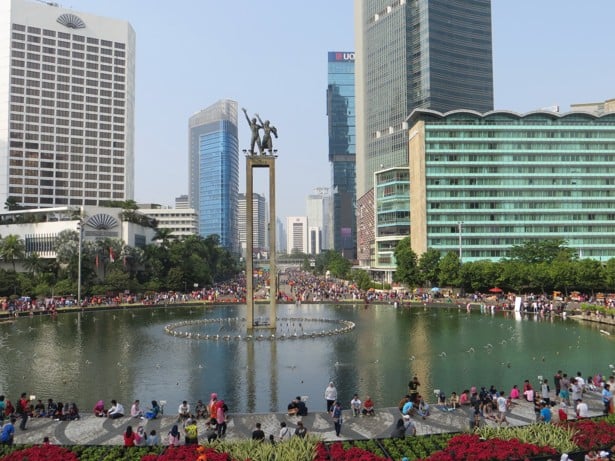
Sukarno, who led the country between 1945 and 1967, left an indelible imprint on Jakarta by commissioning an assortment of massive buildings, statues and artworks that remain landmarks to this day.
“Sukarno’s ideas for Jakarta developed after he visited capitals in South America,” says Marco Kusumawijaya, an urban studies expert and adviser to Jakarta’s Governor’s Delivery Unit. “He came up with this idea that building a city is also building a nation, and he was obsessed with building up the confidence of Indonesia as a nation, as a people.”
Chief among Sukarno’s monuments is Hotel Indonesia, which opened on August 5, 1962, in time for Jakarta’s hosting of the 4th Asian Games that year. With a vision of building Jakarta’s first modern luxury hotel, the president commissioned US architect Abel Sorensen and his wife, Wendy Becker, to design what would end up being a 406-room hotel built on 25,082 square metres of land.
The structure was built in a “T” formation, with the 15-storey Ramayana Wing forming the top of the letter and the eight-storey Ganesha Wing the stem.

The hotel’s circular Wayang Bar (sadly no more) was featured as the informal press club in Christopher Koch’s novel The Year of Living Dangerously, set in 1965 when Sukarno’s powers were on the wane amid fears of Indonesia taking a communist turn.
“Coming in to this circular chamber, you stepped from the flat blaze of the equator into a permanent half-dark, to which air conditioning added a Scandinavian cold,” Koch writes on the opening page of his novel. “You would halt inside the doorway, the sweat drying on your back, and wait for your eyes to adjust so you could see who was there.”
The 1982 Hollywood blockbuster of the same name, based on the book and starring Mel Gibson as intrepid Australian journalist Guy Hamilton, used a similarly designed hotel in Manila for location shooting. The book and film end with Hamilton’s diminutive assistant, Billy Kwan, jumping out of a window on the Ganesha Wing’s top floor.
By 2003, the hotel had become run down and increasingly uncompetitive as new five-star hotels opened in Jakarta. It was losing business in particular to the Grand Hyatt Jakarta, part of the upscale Plaza Indonesia mixed-use complex across the street. So the government leased the property and the adjoining land to the Djarum Indonesia Group for 50 years, with a mandate to renovate the hotel and make it the hub of a new mixed-use complex to include a shopping centre, condominium block and office building.
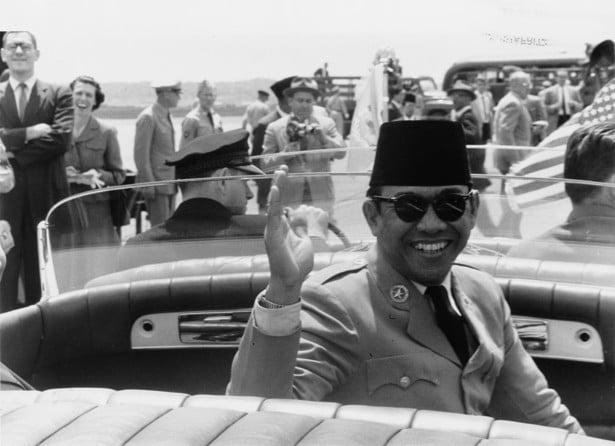
The hotel underwent a major renovation starting in 2004, and reopened as the Hotel Indonesia Kempinski in 2009. As it was a heritage site, the developer was required to preserve the hotel’s original structure, but was given a free hand to redesign the interior.
“In terms of the restoration, we were allowed to do just about everything other than changing the facade,” says Sjefke Jansen, the hotel’s general manager. “It’s basically a brand new hotel on the inside.”
Not everyone is pleased with the metamorphosis, however.
“From the inside I don’t feel that it is Hotel Indonesia any more,” Kusumawijaya says. “And from the outside, I think they have overbuilt. The two original buildings are surrounded by the new buildings. I think it is a greedy development. The old Hotel Indonesia was very humble by current standards.”
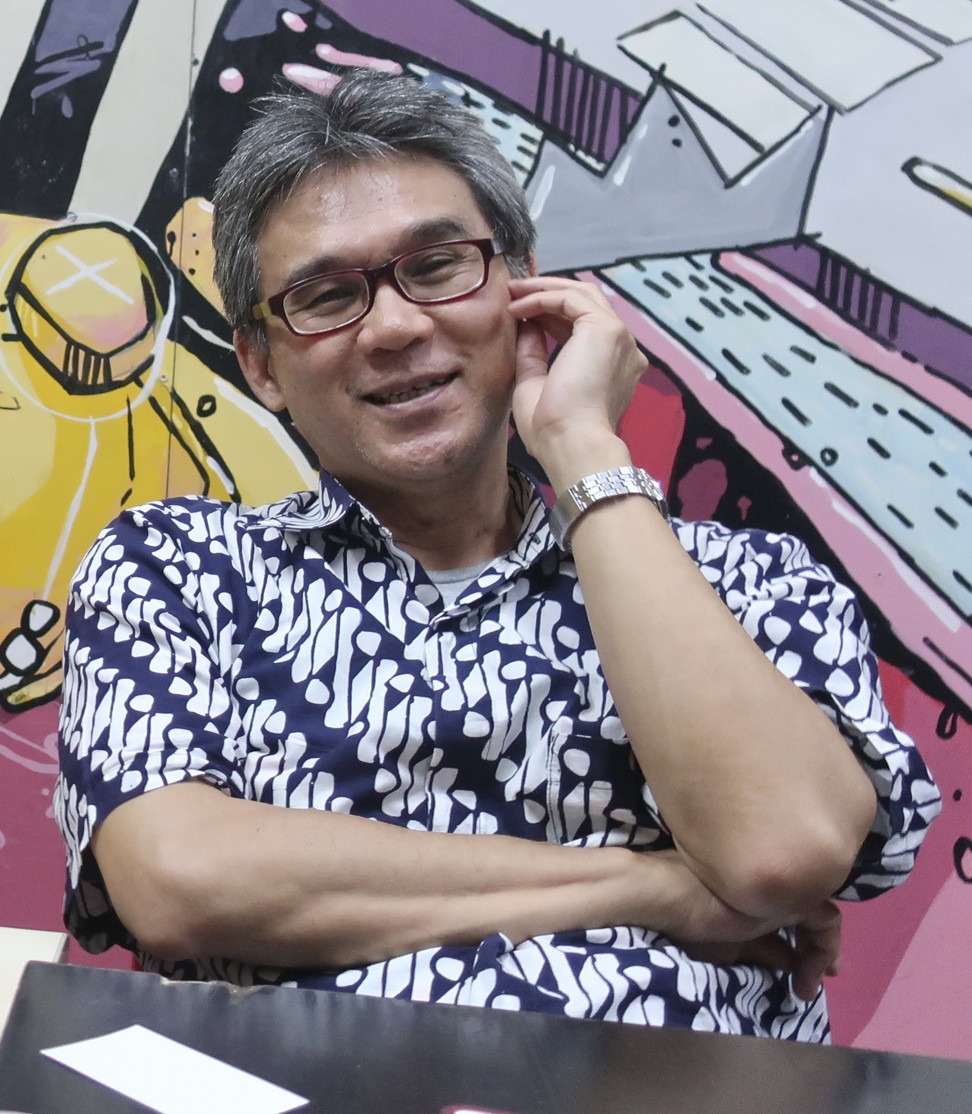
The hotel faces competition from three other luxury hotels situated next to the same roundabout: a Hyatt, a Pullman and a Mandarin Oriental. What these establishments lack, however, and what Hotel Indonesia Kempinski still has in bucketloads, is history, and its management aims to leverage that fact.
“What we are planning … is to turn the hotel from an icon into a living icon,” Jansen says. “We did a lot of research, and to our amazement we found that a lot of people know nothing about Hotel Indonesia, especially the younger generation.
“Hotel Indonesia is the pride of the country; the first five-star hotel, supervised and built by the first president of Indonesia. What I do is sell our history, which we have and no one else has.”

In fact the hotel is doing just fine, with or without repositioning itself.
“We’ve had a fantastic year [in 2018], so the repositioning for us is just a logical step to further enhance that,” Jansen says. “We want to make sure people keep coming back in the years to come.”
Almost 95 per cent of visitors to Hotel Indonesia are “business” clients, and 75 per cent are Indonesian.
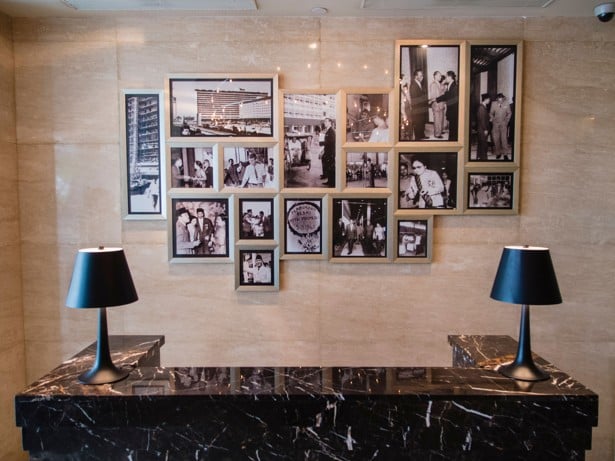
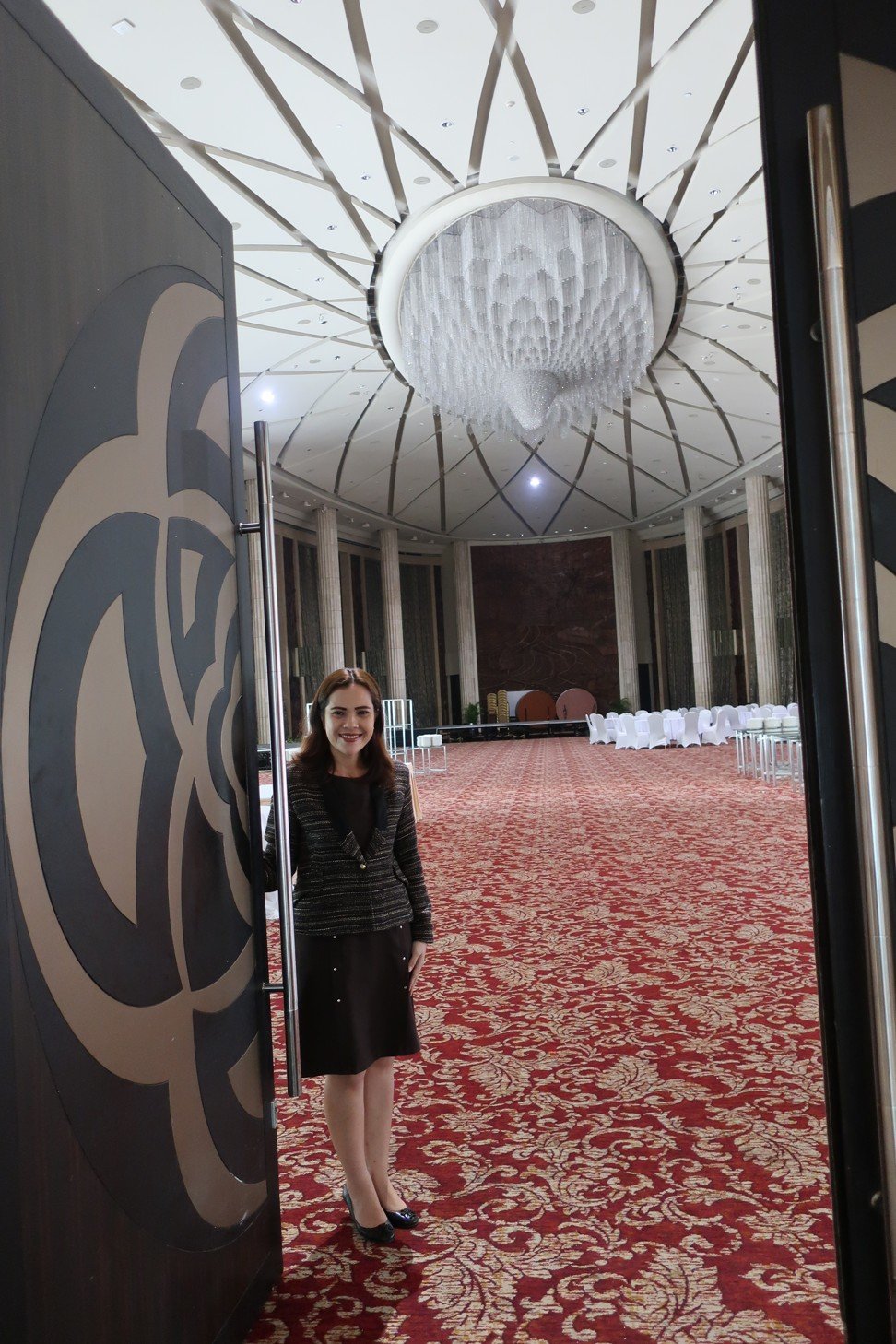
While renovations have transformed the hotel’s interior, it still retains plenty of its Sukarno-era charm. The main entrance to the Ramayana Wing, for example, is much the same as it was 60 years ago. There is still a large Javanese stone mosaic to the left of the entrance, while an elegant sculpture by the famed Indonesian artist Trubus Soedarsono of the Indonesian goddess Dewi Sri still stands on the right.
Inside the entrance is the Nirwana Lounge (relocated from the 16th floor to the ground floor), which is decorated with black-and-white photographs of the hotel, many featuring Sukarno and at least one showing his successor, Suharto. There is even a shot of US senator Robert Kennedy visiting the hotel.
Sukarno thought that a good city, which meant a monumental city, is good for the pride of these new people [Indonesians] in the process of awakening
At the back of the wing is what remains of the Ramayana Restaurant, with its wall mosaic by local artist G. Dharta, One Thousand Indonesian Dances, still on display. The former restaurant, and its surrounding open area, is now an events room popular for fashion shows and other exhibitions.
Perhaps the best preserved area is the Bali Room, an oval ballroom that has hardly changed since Sukarno’s time. A massive wooden mural at the back of the room depicts Balinese motifs.
Sukarno was known for his appreciation of art, especially of the expressionistic and romantic genres with an emphasis on the female body. In its heyday, Hotel Indonesia was a hub for local artists’ exhibitions. This is something Kempinski is trying to revive, and an art gallery on the second floor displays work by local talent.


The MRT line will make it easier for tourists to visit some of Sukarno’s other monuments. They include the GBK Sports Complex, which Sukarno built to host the 1962 Asian Games; the Sarinah Building, the country’s first modern shopping centre; and the Monas Monument, a towering phallic structure started by Sukarno in 1961 and finished by Suharto in 1975. The latter two are both designated MRT stops.
Five best-kept Indonesian travel secrets – trip tips from the pros
There are other Sukarno-era statues that train passengers will be able to visit, including the West Irian Liberation Monument, built by Edhi Sunarso, which shows a man dramatically breaking free from shackles. There is also the Heroes Monument, depicting a muscular young man shouldering a rifle to go to war as his kneeling mother passes him his lunchbox, that was created by Russian artists Matvey Manizer and his son Otto in 1963, when Indonesia was not at war with anyone.
“Sukarno thought that a good city, which meant a monumental city, is good for the pride of these new people [Indonesians] in the process of awakening,” Kusumawijaya says.
Getting there
Cathay Pacific, Garuda Indonesia and China Airlines fly between Hong Kong and Jakarta.
